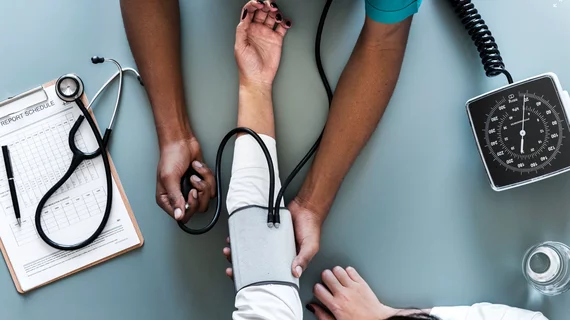In its first scientific statement on accurately measuring blood pressure in 14 years, the American Heart Association gave a stronger recommendation for oscillometric devices and updated the evidence surrounding ambulatory and home blood pressure monitoring techniques.
“Fully automated oscillometric devices capable of taking multiple readings even without an observer being present may provide a more accurate measurement of BP than auscultation,” which has been the gold standard approach for office BP measurements for decades, Paul Muntner, PhD, chair of the writing group for the scientific statement, and colleagues wrote in Hypertension on March 4.
The authors also noted ambulatory blood pressure monitoring (ABPM) has accumulated a wealth of evidence in the past two decades suggesting it is more strongly associated with cardiovascular outcomes than office readings, but reimbursement policies and the availability of the technology have limited its uptake in the U.S.
“Obvious benefits of ABPM include the collection of multiple BP measurements that provide more comprehensive information on BP than is possible with office or home measurements,” the authors wrote. “A key advantage of ABPM over other methods is its ability to identify BP patterns (i.e., sustained, white-coat, masked, and nocturnal hypertension, and nondipping or reverse-dipping BP) that cannot be detected with office BP alone.”
Because more studies support ABPM over home blood pressure monitoring, ABPM is the preferred method for diagnosing and treating hypertension outside of the clinic, according to the statement. However, home blood pressure monitoring—in which individuals measure their own BP at home—“is an acceptable alternative if ABPM is not available or not tolerated by the patient,” Muntner et al. wrote.
Advantages to the home approach include that it’s lower cost and more widely available to patients than ABPM. But ABPM is required to uncover certain conditions such as nocturnal hypertension, which is associated with excess cardiovascular risk.
The document also contains specific recommendations on how many measurements each approach requires for a valid reading, how long the monitoring should be conducted and techniques for taking the measurements accurately and analyzing the results. There is also a section on special measurement techniques, including finger cuff measurements, cuffless monitors, tonometry, ultrasonography and BP measurements using smartphone technology.
“We cannot overstate the importance of using only validated devices, routinely calibrating and maintaining BP measurement devices, and having BP measured by healthcare providers who have been properly trained and retrained,” Muntner and co-authors wrote.

